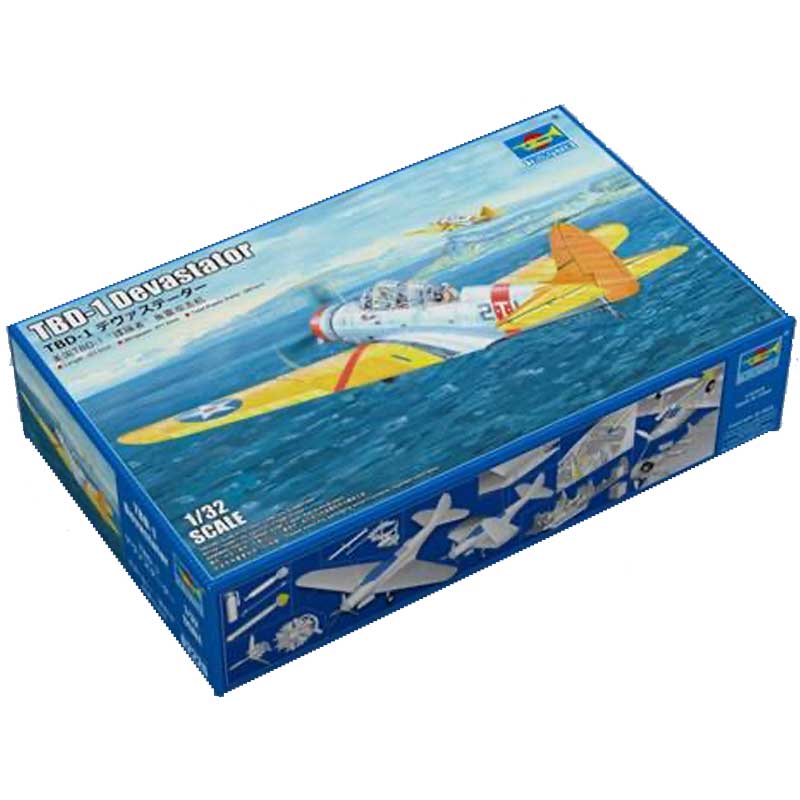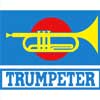£99.99 £89.99
1/32 US TBD-1 Devastator Torpedo Bomber, c.1937-42 02226 Trumpeter
In stock
1/32 US TBD-1 Devastator Torpedo Bomber, c.1937-42 Trumpeter 02226
The Douglas TBD Devastator was an American torpedo bomber of the United States Navy. Ordered in 1934, it first flew in 1935 and entered service in 1937. At that point, it was the most advanced aircraft flying for the Navy and possibly for any navy in the world. However, the fast pace of aircraft development quickly caught up with it, and by the time of the Japanese attack on Pearl Harbor the TBD was already outdated.
The Devastator performed well in early battles, most notably in the Battle of Coral Sea, but earned notoriety for a catastrophic performance during the Battle of Midway in which 41 Devastators recorded zero torpedo hits with only six surviving to return to their carriers. Vastly outclassed in both speed and maneuverability by the Mitsubishi Zero fighters they faced, most of the force was wiped out with little consequence except to distract the Zeros from the SBD Dauntless dive bombers that sank four carriers and a heavy cruiser. Although much of the Devastator’s dismal performance was later attributed to the many well-documented defects in the US Mark 13 torpedo, the aircraft was withdrawn from frontline service after Midway, being replaced by the Grumman TBF Avenger.
In the early days of the Pacific war, the TBD acquitted itself well during February and March 1942, with TBDs from Enterprise and Yorktown attacking targets in the Marshall and Gilbert Islands, Wake and Marcus Islands, while TBDs from Yorktown and Lexington struck Japanese shipping off New Guinea on 10 March.[14] In the Battle of the Coral Sea Devastators helped sink the Japanese aircraft carrier Shōhō on 7 May, but failed to hit another carrier, the Shōkaku, the next day.
Faults were discovered with the Mark 13 torpedo at this point. Many were seen to hit the target yet failed to explode; there was also a tendency to run deeper than the set depth. It took over a year for the defects to be corrected. These problems were not fixed by the time of the Battle of Midway on 4 June 1942.
At Midway, a total of 41 Devastators, the majority of the type still operational, were launched from Hornet, Enterprise and Yorktown to attack the Japanese fleet.[16] The sorties were not well coordinated, in part because Rear Admiral Raymond A. Spruance ordered a strike on the enemy carriers immediately after they were discovered, rather than spending time assembling a well-coordinated attack involving the different types of aircraft – fighters, bombers, torpedo planes – reasoning that attacking the Japanese would prevent a counterstrike against the US carriers. The TBDs from Hornet and Enterprise lost contact with their escort and started their attacks without fighter protection.
The Devastator proved to be a death trap for its crews: slow and hardly maneuverable, with poor armor for the era; its speed on a glide-bombing approach was a mere 200 mph (320 km/h), making it easy prey for fighters and defensive guns alike. The aerial torpedo could not even be released at speeds above 115 mph (185 km/h). Torpedo delivery requires a long, straight-line attack run, making the aircraft vulnerable, and the slow speed of the aircraft made them easy targets for the Mitsubishi A6M Zeros. Only four TBDs made it back to Enterprise, none to Hornet and two to Yorktown, without scoring a torpedo hit.
Only logged in customers who have purchased this product may leave a review.
- Royal Mail Tracked (Standard)** (£3.89)
- Royal Mail Tracked (Express)** (£5.50)
- DPD (£7.99)
- Free – 2-6 Working Days*
** Limited to maximum weight of 2kg
*Free delivery is subject to restrictions, orders between £60-£99.99 containing products that can only shipped with Royal Mail. Orders that include products like aerosols, large quantity of flammable products or over maximum size and weight allowed by Royal Mail will not be sent free and are subject to a carriage charge, Orders over £100 are not subject to restrictions and apply to UK Mainland only. Orders containing hazardous or oversized goods cannot be shipped to NI, IOM, IOW, Highlands, these are excluded from our free shipping.
Order cutoff times - Monday 11am, Tuesday to Friday 12pm.



Reviews
There are no reviews yet.